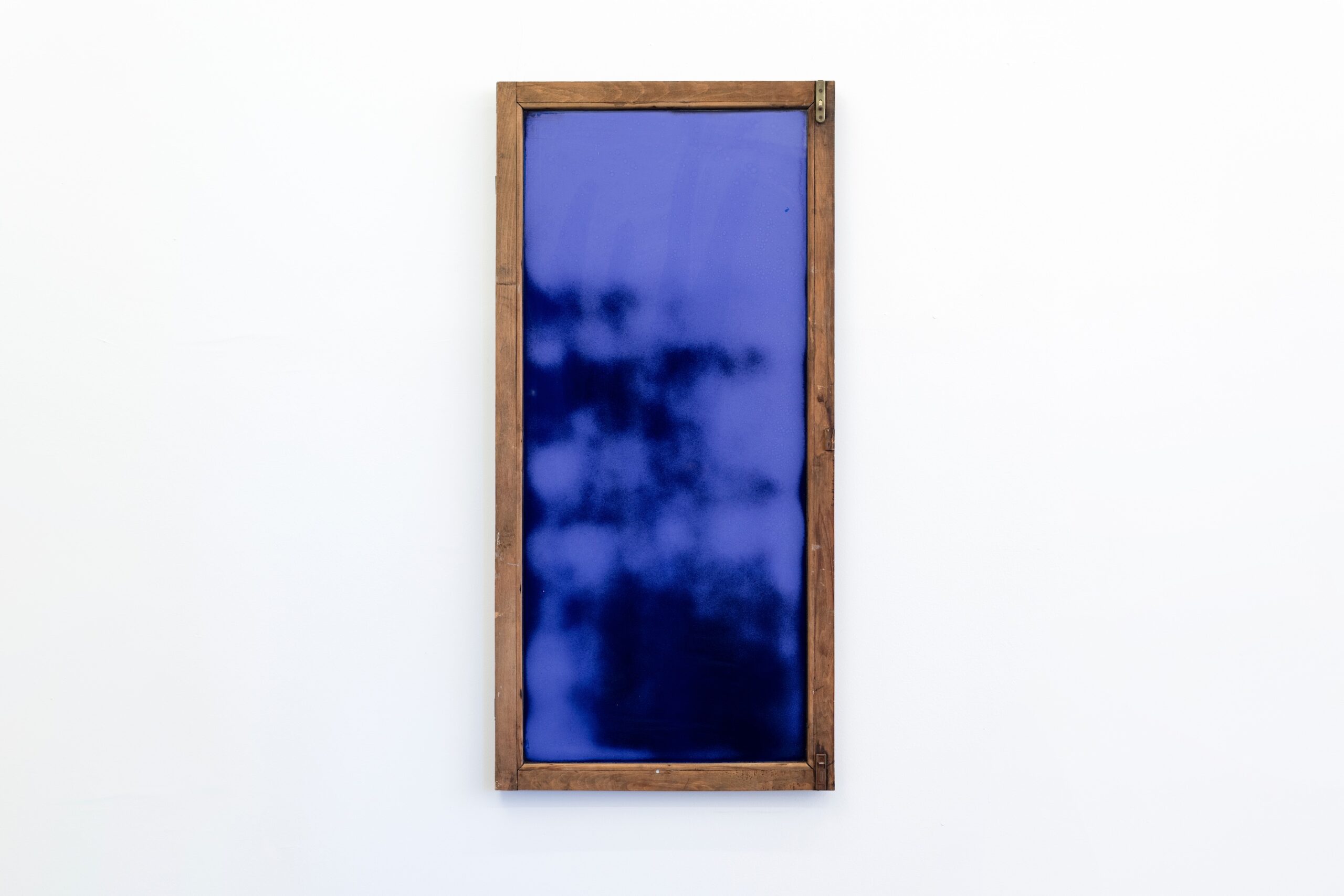Mudam Luxembourg – Musée d’Art Moderne Grand-Duc Jean presents A Model – an exhibition in three parts extending across 2024 – reflecting on the role of the museum today
 Photography by Walid Rashid featuring Installation view of Rayyane Tabet: The Return, 2023. Courtesy of the artist and Sfeir-Semler Gallery Beirut/Hamburg
Photography by Walid Rashid featuring Installation view of Rayyane Tabet: The Return, 2023. Courtesy of the artist and Sfeir-Semler Gallery Beirut/Hamburg
Words by Emma Crichton-Miller
MUDAM is one of three glass masterpieces Chinese-American architect I.M.Pei built in Europe. It is strikingly beautiful, with its sleek honey-coloured limestone blocks and multifaceted glass roof, which both swoops and rises in geometric towers over the unusual spaces below. Completed in 2006 as a bold (if modified) twenty-first century answer to the eighteenth century fortress it confronts, the only point at which the two structures overlap is where the transparent footbridge to Mudam’s jewel-like small octagonal construction, the Henry J. and Erna D. Leir Pavilion, crosses over one section of Fort Thüngen’s grass-topped remains. This respect for the past is also a triumphant assertion of art over war, of light, flooding into the galleries above, over dungeoned darkness below.
For her own first show in this space, MUDAM’s new Director Bettina Steinbrügge has tackled today’s premier curatorial preoccupation: the meaning and purpose of the museum in the twenty-first century. There is a welter of theoretical writing, but she has turned, like many, to artists for answers. The exhibition title comes from Danish artist Palle Nielsen’s 1968 project, Model – A Model for a Qualitative Society.
Then Professor at the Royal Danish Academy of Fine Arts, Nielsen persuaded the Moderna Museet in Stockholm to let him build an adventure playground in the heart of their museum to which children had free access. Rather than let children run amok Steinbrügge has instead invited seasoned international artists – including Colombian Oscar Murillo, British videographer Isaac Julien, American Tony Cokes, French duo Claire Fontaine, Syilx/Okanagan artist Krista Belle Stewart and Danish collective Superflex – to play with the museum’s spaces and its 750 strong art collection. Every kind of -ism is up for questioning, in ways that are by turns challenging, overwhelming, elusive and humorous.
 Photography by Walid Rashid featuring Rayyane Tabet, Six Nights, 2023. Courtesy of the artist and Sfeir-Semler Gallery Beirut/Hamburg
Photography by Walid Rashid featuring Rayyane Tabet, Six Nights, 2023. Courtesy of the artist and Sfeir-Semler Gallery Beirut/Hamburg
As a Prelude, Steinbrügge invited Lebanese architect and artist Rayyane Tabet to start the conversation. Tabet’s installation is a master-class in poetic dialogue. Spurred by research into the museum’s archives and surrounding archaeology, he has brought his own personal narratives into the space to animate one of its most enigmatic possessions, an entire 1932 furniture room-set from Finnish architects and designers Alvar and Aino Aalto’s famous Sanatorium Paimio in Finland. The work was bought in 2000, when architecture and design were part of the nascent museum’s remit. By the time the museum opened in 2006, the focus had shifted to contemporary art, then booming. The modernist masterpiece, with its clear lines and functional design, expressing all its hope for healing, was left to languish in store.
Here it is given a star role, in the pavilion. To reach it, the audience first navigates that glass bridge. Instead of offering views of the city, however, Tabet has curtained the space with semi-transparent hangings. Already we are in a narrative. A booklet reveals that these curtains were installed by Tabet’s grandmother in the home she entered as a new wife in 1950. Unable to afford their own apartment, the newly weds persuaded Tabet’s grandparents to replace their thirty-year old thick velvet curtains with these light, sheer off-white nets, symbols of the sunny, outward looking, post war era. The Pavilion itself, however, is plunged in darkness, the glass walls and roof painted a dark blue. The room-set glimmers in an eerie light cast by car headlights, also painted blue, hung from above. It turns out the fabric of those curtains, Tergal, poisoned those who manufactured it. And now we are in the Six-Day War of 1967 when Beirut was in blackout, and drivers used laundry bluing agent on their headlights to dodge overhead airplanes. Aalto’s rational, human-centred design is caught up in a nightmare.
 Photography by Walid Rashid featuring Rayyane Tabet, The Return, 2023. Courtesy of the artist and Sfeir-Semler Gallery Beirut/Hamburg
Photography by Walid Rashid featuring Rayyane Tabet, The Return, 2023. Courtesy of the artist and Sfeir-Semler Gallery Beirut/Hamburg
Down a curved staircase we reach a final chapter. Fragility has become a theme. On metal shelves, whose functional grid echoes I.M. Pei’s windows, are placed 200 identical glass water jugs. We have jumped to 2020 and the aftermath of the August explosion in Beirut’s harbour. This caused 230 deaths, 7,000 injuries and billions of dollars of damage, including the shattering of 25,000 tons of windowpanes. Here Tabet honours engineer Ziad Abi Chaker, who in the face of the devastation, gathered broken glass in the streets to send to glass-making factories in Tripoli. Although it emerged that only glass that had fallen inside homes was usable, nevertheless 100 tons was repurposed, some of it into these jugs. A tiny but heroic gesture. And one that in its generosity, for Tabet, rhymes with Pei’s generous, many windowed architecture.
Through this journey of ideas and emotions, dramatised through objects, and supplemented occasionally by a performed reading by Tabet, the artist has made the museum a place to make meaning. Yes, MUDAM looks after objects, but A Model foregrounds the preeminent task of enabling those objects to come alive for us and entwine with our own life histories.
A Model’ at Mudam – Musée d’Art Moderne Grand-Duc Jean is on until 8 September 2024, mudam.com
Get a curated collection of design and architecture news in your inbox by signing up to our ICON Weekly newsletter

















